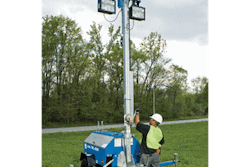By Kathy Scott
Imagine your company empty. No one is talking to your clients. No one is following up on product shipments. The mail has piled up and no one can distribute the pieces.
People Affected: Millions of Americans
Loss of Life Predicted: Over 100,000 in U.S. alone
Cost to Businesses: More than $20 Billion Estimated
Cause: Flu Pandemic
Expected Date: Now
According to the Centers for Disease control, H1N1 was first detected in people in the United States in April 2009. To date, there have been nearly 9,000 hospitalizations due to the virus and 556 reported deaths. On June 11, 2009, Dr. Margaret Chan, Director-General of the World Health Organization, released a statement, "The world is now at the start of the 2009 influenza pandemic," and a second wave of infection is expected in the coming months.
During the 20th Century three pandemics in the U.S. killed hundreds of thousands of Americans including the "Spanish Flu" which killed more than 500,000 people in the U.S. between 1918 and 1919, the Asian Flu (1957-1958) and the Hong Kong flu (1968-1969) that took the lives of thousands in the U.S.
According to the CDC, an average flu season, which runs in the U.S. from October to March and peaks in the winter months, affects 5% to 20% of the population; It claims an average of 36,000 lives annually and infects more than 200,000 people so severely they require hospitalization.
Because the flu virus and H1N1 is easily spread through respiratory droplets excreted through coughing or sneezing, or by touching something with the virus on it and then touching the mouth or nose, entire departments can be affected. Even more concerning, the CDC says that a person may infect others "one day before symptoms develop and up to seven days after becoming sick," so it is essential that companies insist affected employees stay at home.
Telecommuting
If you haven't yet considered telecommuting as an option for your staff, you may want to think again. The benefits of telecommuting do not stop during flu season. In addition to the obvious benefits to our environment, every business must plan for a catastrophic event that may make it difficult to get to work such as weather or a major highway shutdown. Even if your employee is not the one who gets sick, moms and dads must also take off work when their children become ill.
Unfortunately, telecommuting may introduce other risks to network security and before you install a "remote access policy", you and your IT specialists should determine the risks of outsider access. The SANS Institute (SANS.org), considered to be one of the world's best sources for information security, offers a generic Remote Access Policy on its website that can be downloaded and used as a guide for implementing effective policies and procedures that won't compromise your network security. It can be found at http://www.sans.org/resources/policies/Remote_Access_Policy.pdf and edited for each individual company.
Next Steps
In order to avert workplace slow downs or complete shutdowns, Thomas Skinner with the CDC urges businesses to have their employees vaccinated. Many of America's top organizations employ third-party healthcare vendors to immunize workers on-site. The H1N1 flu vaccine is expected to be available this fall. Individuals should also be inoculated when it is available. Other steps include a wellness policy that insures all employees understand general protocols that guard against transferring germs such as the need to:
- Cover nose and mouth with a tissue when coughing or sneezing. Dispose of the tissue immediately after use.
- Wash hands often with soap and water, especially after a cough or sneeze. Alcohol-based hand cleaners can also be effective.
- Avoid touching eyes, nose or mouth. Germs spread this way.
- Avoid close contact with sick people.
- If you are sick with flu-like illness, the CDC recommends that at least 24 hours of home rest after your fever is gone except to get medical care or for other necessities. (Your fever should be gone without the use of a fever-reducing medicine). Keep away from others as much as possible to keep from making others sick.
Finally, create a sick policy that encourages employees to work from home if possible. Keep your workplace healthy and your business will follow.



















